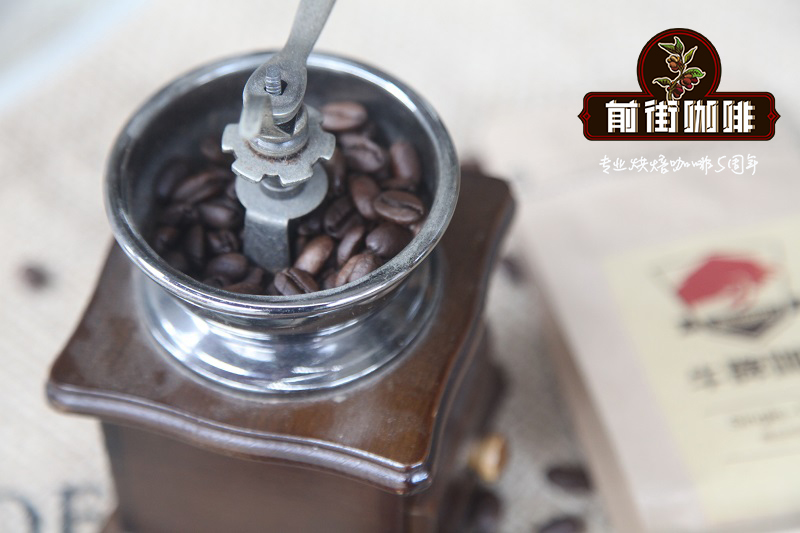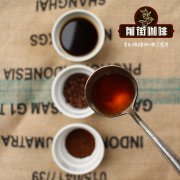What is the suggestion AFCA of coffee hand brewing technique in lim producing area of Ethiopia?

Professional coffee knowledge exchange more coffee bean information please follow the coffee workshop (Wechat official account cafe_style)
There are eight major coffee producing areas in Ethiopia: Ekempti, Limu, Illubabor, Djimma, Harrar, Teppi/Bebeka, Sidamo and Yirgacheffe.
Ethiopian coffee is highly rated in Taiwan, especially Chinese people are particularly interested in and love the three more famous producing areas of Ethiopia, namely Harrar, Sidamo and Yirgacheffe. Sidama province is located in the south of Ethiopia, with Arsi province in the north, Bale province in the east and Gamu Gofa province in the west. The jurisdiction of Sidama province includes two well-known producing areas, Yirgacheffe and Kochere. The industry is dominated by agriculture, and the coffee growing area is located around the East African Great Rift Valley (Great Rift Valley).
Limu, located in the Limu region northwest of Djimma, is a collection of local coffee farmers. It won the third place in the 2016 annual competition held by the African Fine Coffee Association (Africa Fine Coffee Association) (referred to as AFCA). The competition is fierce, the number of participants is large, and the quality is not questionable. Coffee cultivars are native to Ethiopia (Heirloom) and are grown in a 100% organic manner. Soil is Vertisols soil. 1850 to 1900 meters above sea level.
The output of lim is low, and it is mainly exported to Europe and the United States. It is not easy to buy in China in the past, but it is very popular in Europe and America, and its fame is second only to Yega Xuefei. Lim's taste spectrum is different from that of Sidamo and Yega Chuefei: its body is thinner, and its floral and citrus aromas are inferior to those of Yega and Sidamo, but with a hint of grass and cocoa and sandalwood.
Limu coffee has a delicate floral flavor, strawberry, passion fruit, wine ripe fruit, thick chocolate flavor, low acidity, long and clean finish.
Producing area: Limu producing area
Variety: Heirloom (native)
Producer: local coffee farmers in Limu
Altitude: 1850 to 1900 m
Grade: solarization G1
Harvest time: October of each year to February of the following year
Soil: Vertisols soil
Flavor features: exquisite floral flavor, strawberry, passion fruit, wine ripe fruit.
The flavor has a thick chocolate flavor, low acidity and a long, clean finish.
Qianjie recommended cooking method: hand flush.
V60 filter cup, 15 grams of powder, water temperature 89 degrees, small Fuji grinding degree 4, water powder ratio close to 1:15.
30 grams of water steaming, steaming time for 30 seconds, subsection: injection to 130 grams of water cut off, such as the water level dropped 1 stroke 3, re-injection to 230 grams.
When cooking Lim beans, you should have a good grasp of the temperature and time of boiling water, otherwise it is easy to have a bad taste.
Important Notice :
前街咖啡 FrontStreet Coffee has moved to new addredd:
FrontStreet Coffee Address: 315,Donghua East Road,GuangZhou
Tel:020 38364473
- Prev

Even the "careful machine" of coffee-want to harvest consumers with a good cup of coffee?
Professional coffee knowledge exchange more coffee bean information Please follow the coffee workshop (Wechat official account cafe_style) in the increasingly noisy and lively Chinese coffee market in the last year, we have heard too many games, games or business models, whether it is Ruixing, the newly rising unicorn in the Chinese market, or the American coffee giant, which is severely challenged by emerging domestic brands for the first time this year.
- Next

Lim Limu washing local native coffee how to drink? What are the producing areas of Ethiopian coffee?
Professional coffee knowledge exchange more coffee bean information please follow the coffee workshop (Wechat official account cafe_style) Ethiopian coffee is mainly produced in eight major areas: Lekempti, Limu, Illubabor, Djimmah, Harar, Teppi/Bebeka, Sidamo, Yirgacheffe. Ethiopian coffee is highly rated in China, especially for Ethiopian coffee.
Related
- What documents do you need to go through to open a coffee shop? coffee shop coffee shop certificate processing process
- How to purchase Coffee beans in small Cafe how to choose a suitable supplier for domestic Coffee supply Company
- How to drink Starbucks Fragrance White Coffee? how to make Australian White Coffee? what Italian coffee beans are recommended?
- The Story of Flora Coffee: the name of Flora Coffee Bean and the implication of the Flowers on Florna Coffee
- How much does a cup of coffee cost? How much is the profit of a cup of coffee? What is the profit of the coffee shop in a year?
- Yunnan small Coffee, known as "fragrant Coffee", introduces the characteristics of Alpine Arabica Coffee producing areas in Yunnan, China
- 2023 latest Starbucks full menu price list how much is a cup of Starbucks coffee what is better to drink the most popular hot and cold drinks recommended
- Starbucks different kinds of Coffee Price list Starbucks menu 2023 Top Ten Best drinks in Starbucks
- Starbucks Spring praise Comprehensive matching Coffee Bean theme Story Packaging implication and taste description
- The cost of a cup of coffee latte American coffee cost price and selling price

